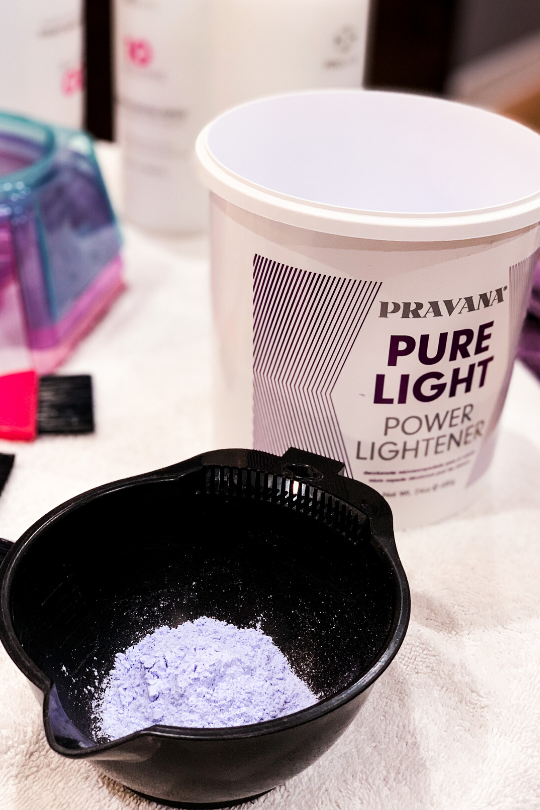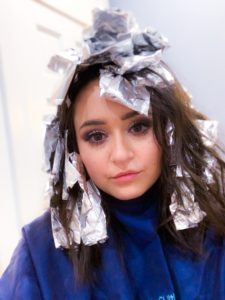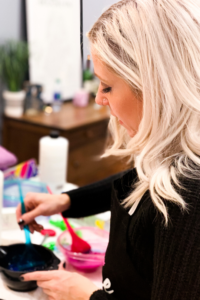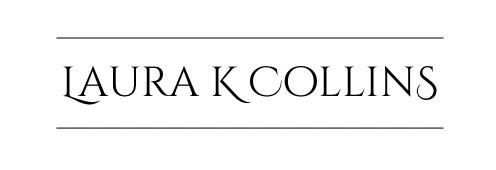
6 Big Reasons Why You Shouldn’t Bleach Your Own Hair
With how high inflation has gone these last few years, it may have crossed your mind to bleach your own hair. Keeping up with your blonde hair can certainly get expensive. And they make it look so easy in the tutorials! It can’t be that hard, right?
Should I bleach my own hair?
Let me just say that there is a reason why hairstylists are required to have a LICENSE to practice. In this post I’m going to explain the dangers in bleaching your hair at home and why it’s more than worth it to wait until you can make it in to a professional hairstylist to bleach your hair for you.
Below is a Youtube video I made on why you shouldn’t bleach your own hair yourself from home.
1. Bleach is a strong chemical
Bleach is a much stronger chemical than regular hair dye is. You need to seriously know what you are doing to avoid ruining your hair or burning your scalp. If left on for too long, regular hair dye will just stop processing. Unfortunately this isn’t the case when it comes to bleach.
When you bleach your hair at home, you aren’t just risking the color coming out poorly and having to spend hundreds if not over a thousand to get your color looking presentable. You are risking breaking ALL of your hair off and rocking a pixie cut or even a shaved head until it grows back.
You’re also risking burning your scalp because you didn’t know what you were doing. Keep in mind that there is no such thing as an “all natural” bleach. It is a harsh chemical, and needs to be treated as such.
2. You only have access to low quality bleach
As a licensed hairstylist, I have access to purchase the top of the line professional products and brands. Lines that the general public cannot purchase even online.
Hair color and bleach that is available to the general public is low quality, off brand, and cheaply made. Even though I know what I am doing, I would never EVER use one of those products on my hair or any of my clients.
The manufacturers of those lower quality brands cut corners to lower the cost of the product in order to mass produce it for the general public. In doing so, they have to use cheaper ingredients and additives that are terrible for your hair and don’t work nearly as well. Let alone you may experience some serious reactions from the harsh chemicals that you may not have experienced had you used a professional brand.
3. You don’t know how to formulate
So lets say that everything I’ve mentioned above doesn’t scare you, or maybe you’ve somehow gotten your hands on a professional bleach.
You still need to know what you’re doing when it comes to formulating. Developer is the liquid that is mixed into the bleach that causes it to oxidize and alter the color of the hair. It comes in different levels of strength, from 0-50 volume.
When using bleach this is incredibly important, you need to know what developer to use based on your hair color, chemical situation, texture, wave pattern, and condition. Some cheap brands may even come with a developer that doesn’t even tell you what volume it is and it’s supposed to be a one-size-fits-all situation.
Let me just say that there is no one volume that is universal to all hair. The volume used is determined by the hair type, color, if it was previously colored or is virgin, distance from the scalp, position on the head (hairline vs. inside), amount of time it will be on the hair, medications, and the list goes on.
If you are not a professional, you cannot make this guess on your own and expect it to go smoothly. On one head of hair I may use 5+ different developer strengths on different areas of the head or hair strand based on a number of different factors.
If you don’t know what you are doing you can wind up in a disaster situation with melted and broken hair, burns and blisters on your scalp, or at the very least orange hair.
4. You can’t apply the bleach yourself safely
Another reason you shouldn’t bleach your hair at home is because when you are using bleach you need to be incredibly precise with the application.
Bleach swells and expands as it oxidizes, so if you overlap and get bleach onto previously lightened hair you can cause the hair to break off where it has been bleached before. I’ve see clients come in with hair broken off an inch from their scalp. I can’t tell you how traumatizing this is for them.
You can also cause bleed marks which are blotches of bleach spots at the root. This happens where the bleach swelled out of the foil and touched the hair around the foil that was not supposed to be bleached. These typically look like leopard prints in the hair at the root.
It takes years of training and practice on mannequins to perfect this application, let alone giving it a try yourself in your bathroom with 0 experience or training. Most hairstylists won’t even attempt to do this themselves.

5. When do you rinse the bleach from the hair?
Knowing when to rinse the bleach from your hair is crucial to avoiding breakage from over processing, as well as orange hair from under processing.
This takes skill that’s learned from extensive practice and training with the specific bleach brand that is being used.
If you wait too long, your hair can turn to complete mush and pull apart like bubble gum. And if you don’t wait long enough, you may end up looking like an orangutan.
There are even times when I take down a few foils and allow others to process longer. The hairs around your hairline are more fragile and will process quicker than the rest of the hair on your head. So you need to either formulate differently for those hairs, or leave the bleach on for a lot less time so that you don’t break your hairline off.
It can be nearly impossible to do this on yourself in your bathroom.
6. Toning bleached hair
To me, toning is the most important step when it comes to bleaching the hair. The bleach itself removes the color and gets you to the level of blonde that you want. But the toning is what determines the shade, or tone of the hair.
The tone you want may be sandy, beige, golden, ashy, violet, silver, copper or any combination. If you don’t get the hair light enough, you can’t have an ashy or silver tone.
If you put an ashy toner over yellow hair, you can cause the hair to turn green. Or if you use too strong of an ashy toner on very light hair, you can turn it blue.
There are also instances where you need to leave some yellow in the hair in order to attain a certain shade that isn’t too muted or washed out. It’s crucial to know the color wheel and the chemistry of hair color in order to be able to tone the hair properly to the shade you’re looking for.

***Since I’m sharing the products that I love to use with you guys, this page includes affiliate links to these products. If you take action and purchase a product through clicking one of my links, I’ll make some commission money from it at no extra cost to you. This enables me to be able to continue giving you awesome hair tips, so thanks! ***
Instead of bleaching your own hair…
Unfortunately I do not suggest doing any sort of bleaching to your hair at home under any circumstance. There is way too much risk involved and the condition of your hair is always my number one priority. I’m not telling you this because I want you to spend money at a hair salon. I’m telling you this because I have seen countless instances of people absolutely destroying their hair at home. I can’t explain how traumatizing this is for them.
Your hair can take YEARS to recover from chemical damage. Let alone how much you’ll have to spend to have the color fixed, which is much much more than if you had just gone to a professional in the first place.
If you are in dire need of a toner, I recommend using a color toning conditioner in the meantime. These are semi-permanent conditioners that tone to your hair. They do not require developer and can be done in the shower. The longer you leave it on and the more frequently you use it, the deeper the color will be.
Celeb Luxury Gem Lites Colorditioner
I suggest keeping up with the tone of your blonde by using a high quality purple shampoo and conditioner. You can find my favorite brand below:
Conclusion
I suggest NEVER attempting to bleach your hair yourself from home. You not only risk messing up the color, but you can absolutely destroy your hair. It can take multiple years to get your hair back to good condition after significant bleach damage
- Bleach is a strong chemical
- You don’t have access to professional grade products
- You don’t know how to formulate correctly
- You can’t apply bleach yourself safely
- You don’t know when to rinse the bleach from your hair
- You aren’t trained to tone the hair properly
Instead, I suggest seeing your hairstylist for mini services that cost a lot less instead of attempting to do it yourself. You can also maintain your bleached hair at home with coloring toning shampoos and conditioners in-between your salon appointments.
If you would like more tips on blonde and lightened hair to keep it in its best condition possible, check out my post here.
If you have any further questions for me, leave them in the comment section. And be sure to subscribe below if you want to make everyday a good hair day!



Comments